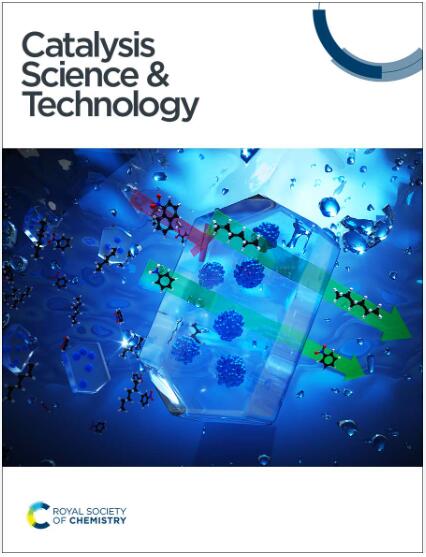The in situ structural evolution of Bi2O3 facilitates the electrocatalytic hydrogenation of oxalic acid to glycolic acid†
IF 4.4
3区 化学
Q2 CHEMISTRY, PHYSICAL
引用次数: 0
Abstract
Electrocatalytic hydrogenation (ECH) of oxalic acid (OX) as feedstock to generate glycolic acid (GA) with high added value has been considered to provide a feasible route for eco-friendly synthesis of GA. Herein, a Bi2O3-based electrocatalyst was reported for the first time in the selective ECH of OX to GA in acidic media. At −0.5 V vs. RHE, the selectivity toward GA reached 87% with an OX conversion of 82% in 0.05 M H2SO4. Notably, the Bi2O3 catalyst underwent a potential-driven reconstruction, resulting in a transformation from Bi2O3 particles into a dendrite-like Bi/Bi2O3 heterostructure. Kinetic studies demonstrated that the ECH of OX over the reconstituted Bi/Bi2O3 occurred through the Eley–Rideal (E–R) mechanism. The superior electrocatalytic efficiency originated from the Bi/Bi2O3 heterostructure with abundant defects that optimized the surface charge distribution and boosted the adsorption of the intermediate HOOCCO*, thereby exhibiting a notable selectivity for GA.

求助全文
约1分钟内获得全文
求助全文
来源期刊

Catalysis Science & Technology
CHEMISTRY, PHYSICAL-
CiteScore
8.70
自引率
6.00%
发文量
587
审稿时长
1.5 months
期刊介绍:
A multidisciplinary journal focusing on cutting edge research across all fundamental science and technological aspects of catalysis.
Editor-in-chief: Bert Weckhuysen
Impact factor: 5.0
Time to first decision (peer reviewed only): 31 days
 求助内容:
求助内容: 应助结果提醒方式:
应助结果提醒方式:


